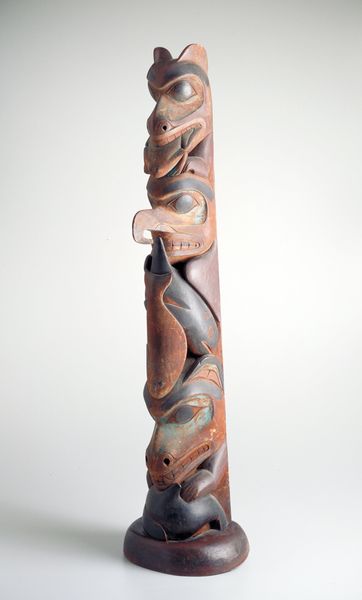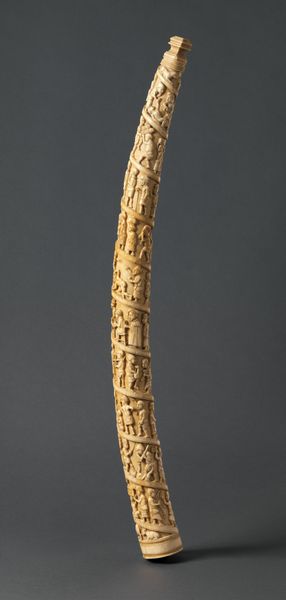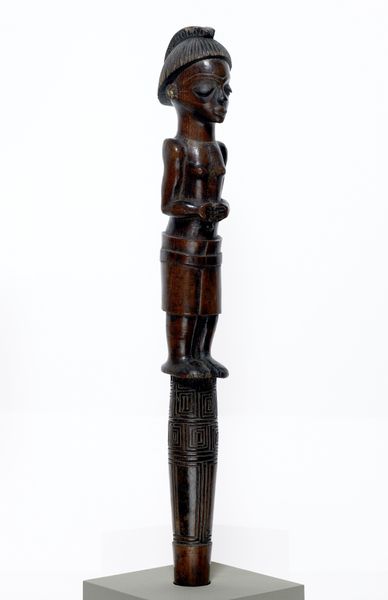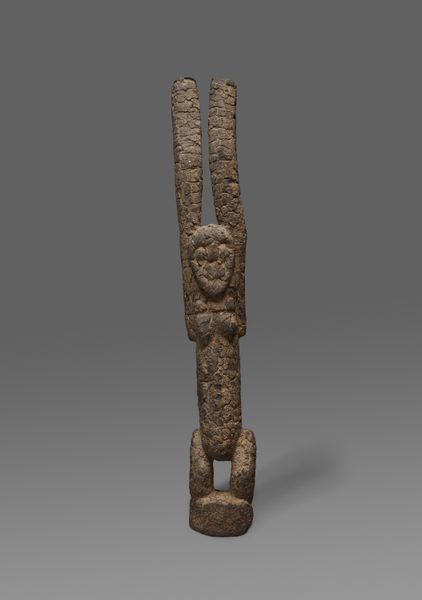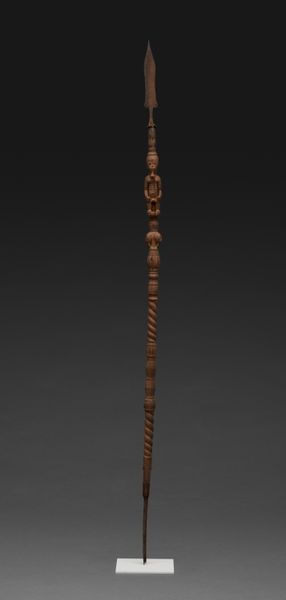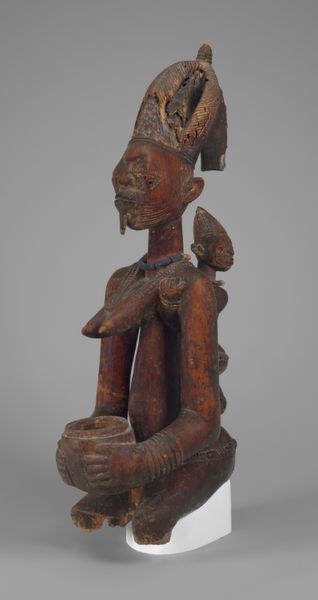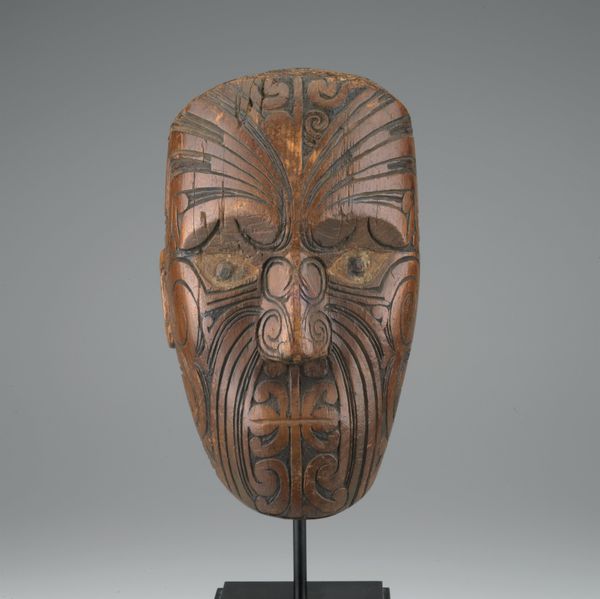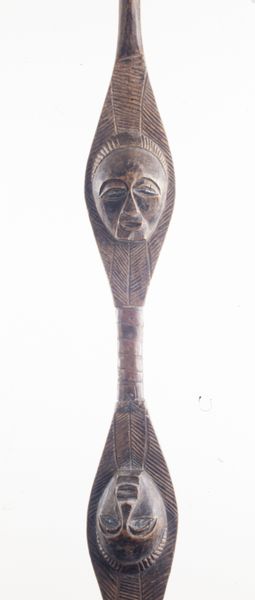
carving, sculpture, wood
#
portrait
#
carving
#
pattern
#
figuration
#
sculpture
#
wood
#
yoruba-art
#
miniature
Dimensions: H. 47 cm (18 1/2 in.)
Copyright: Public Domain
Editor: So, we’re looking at a piece called "Tapper (Iroke Ifa)," a Yoruba carving, probably from the 17th or 18th century. It's currently housed at the Art Institute of Chicago. It’s quite small, and made of wood, and there's such detailed figuration throughout! It feels like it tells a story, but I’m not sure what story. What's your interpretation? Curator: It’s tempting to see this as a contained, individual narrative, but I want to challenge that impulse. How do museums often present objects like this? What’s emphasized and what’s left out? Editor: Well, the display cases isolate them, of course. We get a little plaque with provenance, materials, and maybe some symbolic meaning, but very little context for their social function. Curator: Exactly. The "Iroke Ifa," or diviner’s tapper, isn’t just a static artwork. It played a part in a vibrant divination process, used by a Babalawo, or Ifa priest. Think about how the museum freezes it, silencing its original sound and agency within a community. How might seeing this object differently affect our understanding? Editor: It completely reframes it. It wasn’t meant to be silently observed in a museum! Knowing it was an active tool in a ritual makes me see the carved figures differently. They're not just decoration, but important for this ritual purpose. Curator: Precisely. And this ritual itself, connected to Ifa divination, is at the heart of Yoruba spiritual life, offering a powerful form of knowledge and social guidance. Editor: So the sculpture is almost like a voice? Curator: In a way, yes. A material voice connecting to something much larger. What do we do with that knowledge when we put it back in the display case? What responsibility do we have? Editor: That makes me think differently about every artifact I see on display. There’s a whole other level of interpretation beneath the surface, and our modern way of presenting art affects how we engage with it. Curator: It’s a critical point to consider. Seeing the history *around* the art as part of the work itself allows a much deeper understanding of our culture and the cultures of others.
Comments
No comments
Be the first to comment and join the conversation on the ultimate creative platform.

